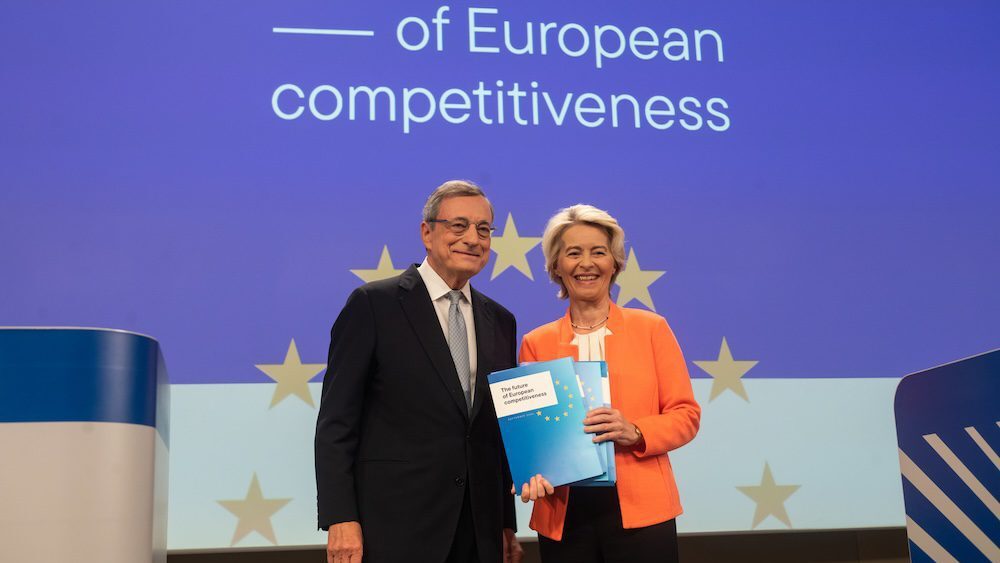
Former ECB chief Mario Draghi presents his report to EU Commission President Ursula von der Leyen.
Photo: Aurore Martignoni / © European Union 2024 – Source: EC Audiovisual Service
Former Italian prime minister and European Central Bank (ECB) chief Mario Draghi is desperately trying to salvage the reputation of his long-awaited report on the future of the EU’s competitiveness. His key proposals to make joint loans a permanent feature of the EU budget—in order to finance the massive €800 billion hole in EU investments—and to transfer even more power to the hands of Brussels were flat-out rejected by member states.
On Monday, September 30th, Draghi expressed regret that officials focused too much on the joint debt suggestion and therefore missed the big picture. He went on to explain that issuing more joint debt was not really “essential” anyway, although he added that his call to invest around 5% of the bloc’s GDP into competitiveness is just a “conservative” estimate.
“This [joint EU debt] was the very first thing people reacted to in the whole report,” Draghi said at an event hosted by Bruegel, a Brussels-based economic think-tank. “I have to say, as much as I love this concept, it is not the main thing in the report,” the former ECB president said, adding, “There are many good reasons for having it, [but] it is not an essential ingredient.”
As we explained after the report’s release in early September, Draghi’s magnum opus called for “regular and sizable issuance by the EU of a common safe and liquid asset to enable joint investment projects” across member states, and “help integrate capital markets,” thereby “building on the model of NextGenEU.”
The NextGenEU instrument was the first time the EU took out a massive loan in the name of the member states to finance pandemic recovery measures in December 2020, and even then most governments only agreed to it after being given guarantees that it was a “one-time only” thing.
Yet the Commission has been floating the idea of more joint debt ever since, ironically in part to help pay off the rising interest rates of that first loan. It is clear that if the EU begins issuing joint debt on such massive scales once more, that will inevitably lead to the bloc becoming a permanent ‘debt union.’
The idea is not only problematic because different countries with different spending habits and economies will be ever closely tied to each other, but also because managing such a scheme will require “specific political and institutional conditions” to be put in place in Brussels, as the report suggested, meaning ever more centralization and erosion of member states’ economic sovereignty.
So while Draghi argues in the report that joint debt is the best way to stay afloat in a world dominated by the U.S. and China, he now claims it’s not “essential” without pointing to alternative modes of raising the colossal investment, as if the EU could just magically conjure up close to a trillion euros every year.
Besides, as Draghi stressed at Bruegel’s event, his call for a “minimum” of €750-800 billion annual investment is a “relatively conservative” estimate because it only covers green energy, digital, and defense investments without addressing other sectors, such as education or ‘climate adaptation.’
It remains to be seen whether the EU will move forward with any of Draghi’s suggestions, but Commission chief Ursula von der Leyen promised she would unveil an economic reform proposal at least partly based on the report sometime in early 2025. After that, it’s up to the EU Parliament and the governments themselves to come up with their revisions or alternatives.
Many (even traditionally sovereigntist) member states have said Draghi’s prognoses about what’s driving Europe’s economic decline are accurate, especially the problem of overregulation, but the answer of more debt and more EU remains, at least for now, unattractive.
